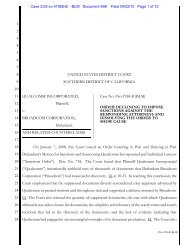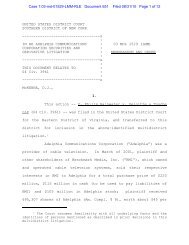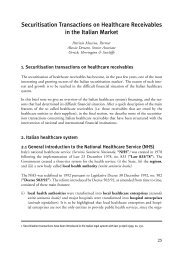Public Charter Schools Borrowing With Tax-Exempt Bonds, Second ...
Public Charter Schools Borrowing With Tax-Exempt Bonds, Second ...
Public Charter Schools Borrowing With Tax-Exempt Bonds, Second ...
You also want an ePaper? Increase the reach of your titles
YUMPU automatically turns print PDFs into web optimized ePapers that Google loves.
data is presented in the final official statement, or for obligated persons meeting<br />
certain objective criteria.<br />
• Audited financial statements of the obligated person(s), when and if available,<br />
if not provided with the annual financial information.<br />
• Notice of the occurrence of any of eleven extraordinary events (as specified in<br />
the Rule), if material, in a timely manner.<br />
• Notice of any failure to file the required annual financial information.<br />
The promise to make the annual reports and the material event reports must be<br />
included in a document or agreement which is enforceable by bond owners, such<br />
as an indenture, must be reflected in the bond purchase agreement, and must be<br />
described fully in the official statement. Non-compliance must be reported to the<br />
repositories and disclosed in future official statements for five years, with possible<br />
adverse market consequences for the school’s bonds.<br />
5. Interplay of Rule 15c2-12 and the Anti-Fraud Provisions. The SEC’s anti-fraud<br />
rules apply to disclosures intended to influence securities markets. Under accepted<br />
legal principles, annual reports and material event disclosures must therefore be<br />
accurate and not omit any material information needed to make the disclosures<br />
not misleading. Material misstatements or omissions in the annual or event reports<br />
may be the basis for claims of securities fraud under federal or state securities laws,<br />
actionable by the SEC or private plaintiffs (bond owners or other investors), with<br />
substantial potential liability for the school.<br />
B. Private Placement of <strong>Bonds</strong><br />
The first tax-exempt financings undertaken by public charter schools were privately<br />
placed bonds; almost necessarily, given the uniqueness of public charter schools and<br />
the fact that no such bonds had theretofore been issued or sold in the capital markets.<br />
Over time, with greater market understanding of public charter school bonds, public<br />
offering has become the standard method of sale. As described above, the general<br />
rule is that a public offering will elicit the lowest cost of borrowing. However, certain<br />
conditions may make private placements at least worth considering:<br />
1. In some cases, a school may have a private foundation or high net worth<br />
individual or institution that is interested in directly supporting the project<br />
<strong>Public</strong> <strong>Charter</strong> <strong>Schools</strong> <strong>Borrowing</strong> <strong>With</strong> <strong>Tax</strong>-<strong>Exempt</strong> <strong>Bonds</strong>, <strong>Second</strong> Edition 43

















